Metaphors, similes, and analogies are figures of speech used to help explain concepts and ideas. Metaphors can be simple and are often poetic (“Design is cooking”); similes are similar to metaphors but they use “like” or “as” to be more direct in the comparison (“Design is like cooking”). Meanwhile, analogies are more complex and exploratory in nature (“Design is like cooking in that cooking combines ingredients in a specific order to create tasty meals and design combines various methods in order to produce products, services, and experiences.”)
Often, metaphors and analogies are used to create “ah-ha” moments by drawing comparisons from the familiar to the unfamiliar. For example, you likely have some baseline knowledge about cooking, regardless of your level of expertise, so you can understand the comparison of cooking to design and how you might leverage methods as ingredients and combine them to create recipes to solve challenges. At LUMA, we often use metaphors and analogies to explain new concepts.
Below, I’d like to explore some of the analogies that help us explain the LUMA System and the 36 design and collaboration methods housed therein.
Introducing the LUMA System
Here are a few similes and analogies to explain the LUMA System.
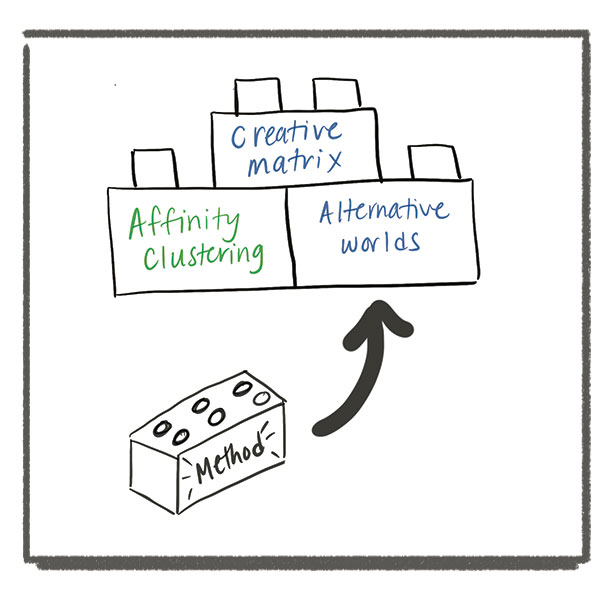
- The methods in the LUMA System are like the letters in an alphabet; just like you can arrange the 26 letters in the English alphabet to make countless words, you can arrange the 36 methods in the LUMA System to create meaningful combinations that will help you solve any problem.
- The LUMA System is like a set of building blocks; just like you can create masterpieces from a variety of different Lego blocks, you can combine LUMA methods in different ways to help you piece together a solution.
- The LUMA System is like the periodic table of elements; just like you can combine different scientific elements to make the various compounds and substances, you can combine LUMA methods in different orders to create desired outcomes.
Question: What’s your favorite way to explain the LUMA System? Do you remember how the LUMA System was first introduced to you?
Names of LUMA Methods
There are a handful of LUMA methods that have metaphors built into their names. This means that when you learn the name of the method, it also subtly explains a core concept of the method at the same time. Here are some examples:
- Fly-on-the-Wall Observation (Looking, Ethnographic Research): While conducting this ethnographic research method, you want to be like a “fly on the wall” and simply observe what is occurring without trying to interfere or be noticed. Don’t get swatted!
- Walk-a-Mile Immersion (Looking, Ethnographic Research): When conducting this ethnographic research method, you attempt to figuratively walk through an experience like another person to gain deeper empathy for their first-hand experiences. Walk a mile in their shoes.
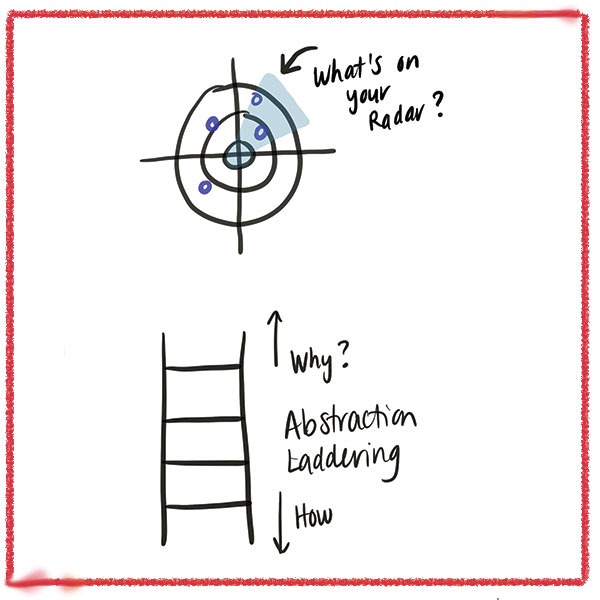
- What’s on Your Radar? (Looking, Participatory Research): This method uses a radar screen for the template of the activity, similar to the radar screens seen in boats and airplanes. The radar both divides the area into different regions and provides information about how close you are to a target, which indicates which information is the most important.
- Bull’s-eye Diagramming (Understanding, Patterns & Priorities): Think of this method like the target used while playing darts. There are concentric circles (i.e., must-do, should-do, could-do) and you want to hit the center of the target and accomplish the must-do tasks first.
- Problem Tree Analysis (Understanding, Problem Framing): This method uses the visualization of a tree – roots digging deep into the ground and branches extending outward from the trunk – to explain the key aspects of the methods. In using this method, you identify a problem and think about the different causes of the problem (roots) and then think about the various effects (branches).
- Abstraction Laddering (Understanding, Problem Framing): This method is modeled after the visualization of a ladder; as you go up the ladder you ask “why?” and you get to a higher altitude of the problem, and conversely as you go down you ask “how?” and you get to a lower altitude, or more specific problem. You can use the ladder to get to the “right rung” — in this case, the right problem to solve.
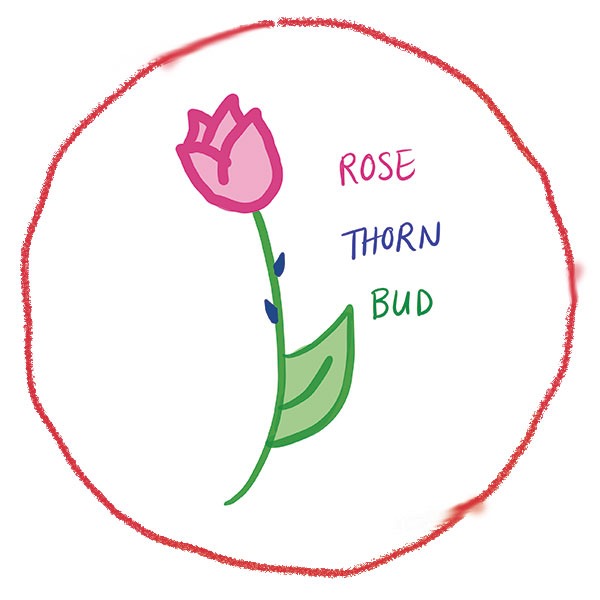
- Rose, Thorn, Bud (Understanding, Problem Framing): This method uses the comparison to a rose bush – the rose, buds, and thorns – to explain the key aspects of this method. The roses are beautiful flowers and thus are the positive elements, the thorns are prickly and therefore negative elements, and the buds are the blooming opportunities.
- Thumbnail Sketching (Making, Concept Ideation): This method uses the comparison of the size of your thumb’s nail to encourage quick and iterative sketching of many ideas – each idea should roughly the size of your thumbnail to deter from overthinking and critiquing while ideating.
- Round Robin (Making, Concept Ideation): This method uses two comparisons. First, the notion of signing petitions in a circular order (“round robin”) to promote group authorship and collective ownership. Second, this method borrows from the round robin tournament style where each team gets a turn playing the other teams. Combined, this ideation method encourages building on each other’s ideas through the act of passing concepts from person to person.
Explaining LUMA methods
In addition to methods having metaphors embedded into their names, there are methods in the LUMA System that use analogies to explain key aspects about how they work. I overheard many of these from fellow LUMA instructors while teaching over the years. Here are a few of my favorites:
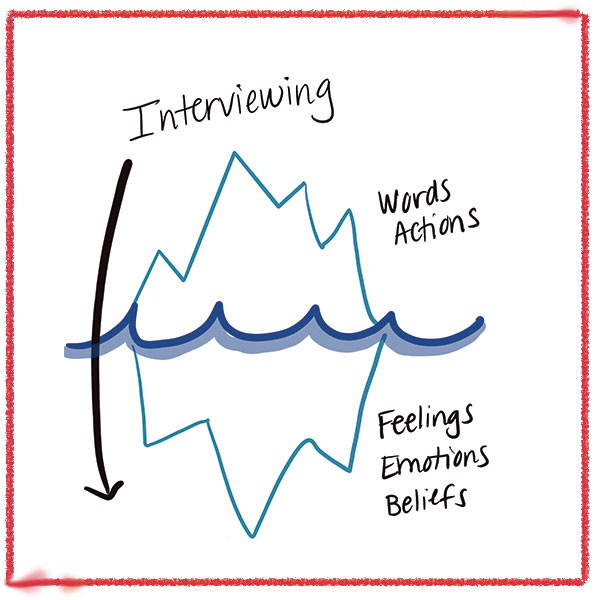
- Interviewing (Looking, Ethnographic Research): One way to explain the value of a design ethnography interview is describing it as a tool for uncovering what is “beneath the iceberg” — getting to the often hidden motivations, emotions, and values behind people’s actions and words. Another way to explain interviewing is by comparing it to a treasure hunt for new data and insights. It’s important to have a map to find the treasure, while also keeping our eyes and ears open for the unexpected!
- Think-aloud Testing (Looking, Evaluative Research): One piece of advice when conducting this method is to ask the person doing the evaluation to “put their mind on speaker phone” and think aloud as they perform various actions and tasks. This gets people to talk without overthinking.
- Stakeholder Mapping (Understanding, People & Systems): Stakeholder maps are similar to Google or Apple maps; you can zoom in and see the neighborhood with specific streets and landmarks or you can zoom out to see the connection of a larger city through all of the roadways. It’s important to balance between zooming in and zooming out on your stakeholder maps to make sure you are seeing the larger connections between groups of people and the subtle nuances between individual people.
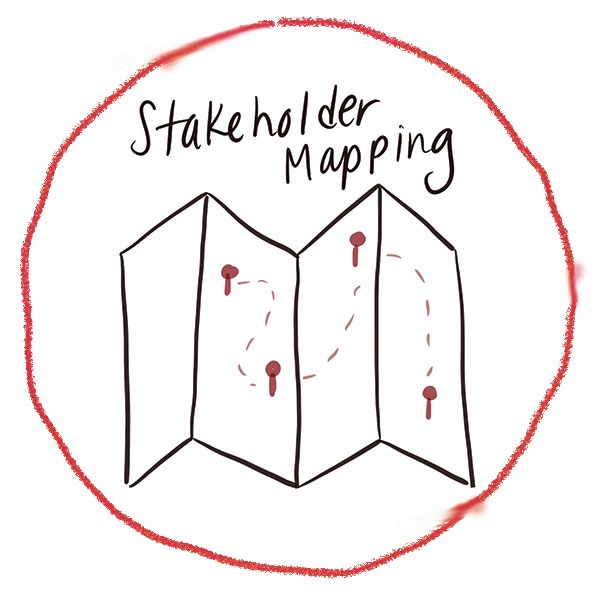
- Statement Starters (Understanding, Problem Framing): Crafting good Statement Starters is like getting the perfect bounce off of a swimming pool diving board; the good ones will help you bounce higher and soar to new heights and unlock new opportunities, and bad ones can make you belly-flop. Another metaphor is that you want to find the “sweet spot” in a good Statement Starter; make sure it is not too sweet and not too bland to unlock innovative thinking!
- Abstraction Laddering (Understanding, Problem Framing): Using Abstraction Laddering is like being in a hot air balloon with your team, adjusting the amount of heat to go up or down to be the ideal altitude so that you don’t go too high that the balloon pops or too low that you hit the trees below.
- Rose, Thorn, Bud (Understanding, Problem Framing): Rose, Thorn, Bud is like the salt of the LUMA System – you can use it to add flavor to almost anything! It is a complementary method to many of the other ingredients in the system.
- Alternative Worlds (Making, Concept Ideation): Alternative Worlds is like putting on different metaphorical “hats” for different people, where you envision how you’d solve a problem by learning more about different perspectives.
- Storyboarding (Making, Modeling & Prototyping): Storyboarding is like being the director of a movie, explaining the scenes of how the story will unfold before you film. It is also like a comic strip, where the minimal scenes showcase the actions.
- Cover Story Mock-up (Making, Design Rationale): Cover Story Mock-up is like an engaging Magazine Cover; it sparks your interest and leaves you wanting to read more.
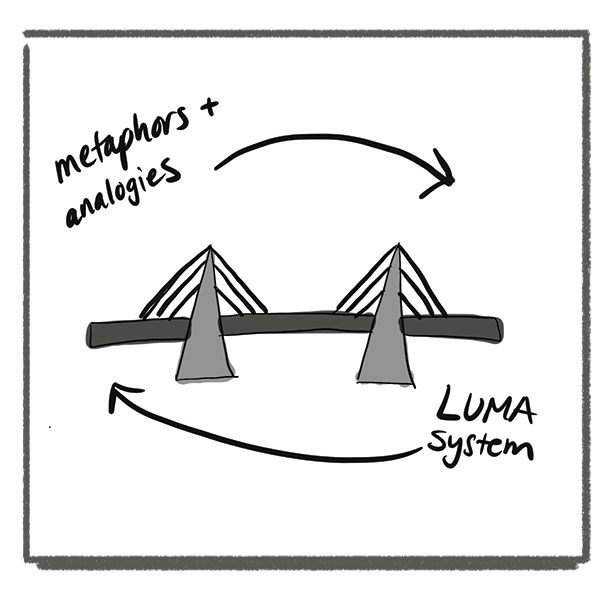
We hope you enjoyed learning about some different examples for how to explain methods in the LUMA System. Next time you are facilitating a design thinking session, consider using metaphors, similes, or analogies to help the participants learn a new topic through “bridging the gap” between the familiar and the unfamiliar. The metaphorical bridge will support your collaborators and put them on a road to success.

